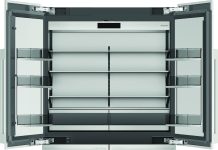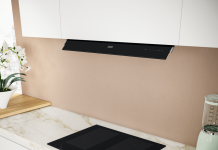
The innovation of material, process and product to improve the efficiency and eco-sustainability performances of pellet stoves is the focus of the brazier prototype in ceramic material for pellet stoves, able to optimize the combustion process for the heat production and to decrease the polluting emissions, manufactured by ENEA, developed by Faenza Laboratory of material Technologies. The ambit is the one of the Proof of Concept (PoC) programme promoted by the Agency to enhance the transfer of innovative technologies to enterprises and to reduce the gap between research results and their potential use/marketing. The project exploits the potential of the 3D printing process (addictive manufacturing) and of innovative ceramic materials for the production of new components with complex shape and high chemical-physical and thermo-mechanical properties, including burners and microturbines for the production of energy, for the automotive and aerospace sectors, too.
Starting from thialite (aluminium titanate), advanced ceramic material with high resistance to the thermal shock, essential property for the ignition and shutdown phases of the brazier, ENEA team has developed a water-based ceramic paste, optimized to minimize the use of organic additives and to make it compatible with the 3D printing technology. The CAD design of the brazier was then supplied by the project partner company, Palazzetti Lelio spa, specialized in wood biomass domestic heating systems, which has also tested the component under real operation conditions in a pellet stove. The use of 3D printing techniques makes the use of technical ceramic materials for the brazier production economically advantageous and then accessible in comparison with cast iron, granting more constant operation conditions at high temperatures, meanwhile reducing the manufacturing costs, high until now. As explains Alessandra Strafella, researcher of ENEA laboratory of material Technologies in Faenza, “the addictive manufacturing process allows obtaining components with complex geometry, minimizing the material quantity needed for forming, the post-process mechanical machining, implementation times and, finally, the energy consumption since the component production takes place at environmental temperature, making the whole process highly sustainable”.

The modality with which the brazier contributes in reducing the polluting emissions and improves the combustion process optimization “is strictly connected with the material typology for its implementation, that is to say a paste of the technical ceramic thialite, purposely developed for the additive manufacturing technique, besides featuring optimized shape. In domestic heat generators, like for instance pellet stoves, it is possible to obtain an efficiency improvement with the optimization of the combustion, of the fluid-dynamics and of the fume control. Such factors are strictly connected with the maximum operation temperature: the rise of this parameter can in fact lead to maximize the development of the produced heat, to influence the system’s fluid-dynamics and to favour the complete oxidation of the fuel, so reducing the emissions of CO, Total Organic Carbon (TOC) and of powders. Technical ceramic materials, which represent an alternative to metals, are of extreme interest to assure more constant and repeatable operation conditions of the brazier at high temperature, they feature high thermo-mechanical, chemical and wear resistance, they are even more refractory and with better thermal properties than metals. The possibility of increasing the operation temperatures of stoves is therefore advantageous in terms of efficiency improvement of a domestic heat generator and of environmental impact reduction, therefore of higher sustainability”.

Shape and innovative material are strictly interconnected. “In AMCER project (Additive Manufacturing of CERamic components for the sustainability of domestic heating systems, editor’s note) the feasibility of pellet stoves’ braziers made of technical ceramic material has been proven, so that it is possible to increase the operation temperature, then the combustion process efficiency, minimizing pollutants; having a complex shape, the brazier has been made by means of an addictive manufacturing technique, developing, in our laboratories, a specific ceramic paste suiting this process and optimizing the brazier’s design, so that it can be more efficient”. Concerning this, “we have implemented a brazier with complex geometry, operating at high temperatures, optimized for the improvement of the efficiency, of the environmental impact and of the sustainability of domestic heating systems. The shape, complex and then feasible almost exclusively with addictive manufacturing process, but already tested in stoves, has been optimized by increasing for instance the distribution of the holes on the base, to favour the airflow during the combustion, therefore to improve its performances and fluid-dynamics, too”.
The collaboration with Palazzetti Lelio company “has allowed demonstrating the feasibility of this brazier and carrying out the first control tests in operation, like those on the ignition/shutdown cycle, followed by further tests on the brazier in operation”.



